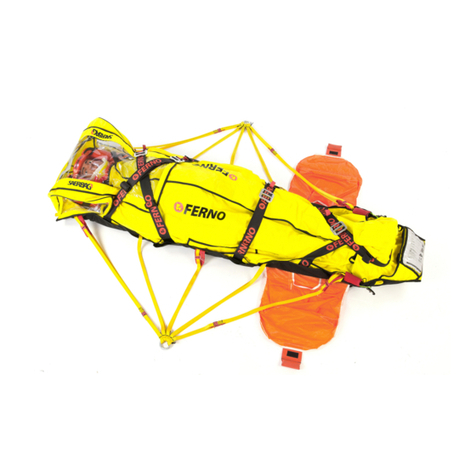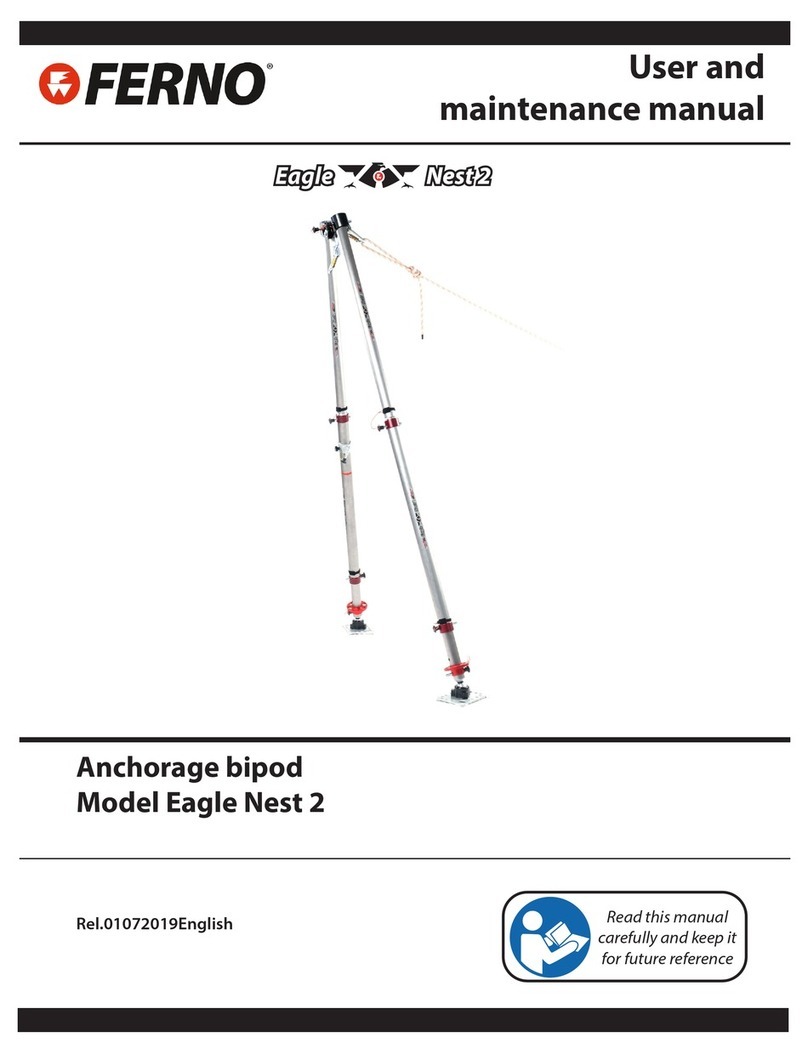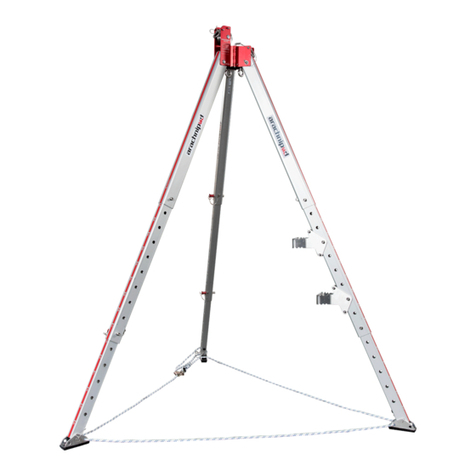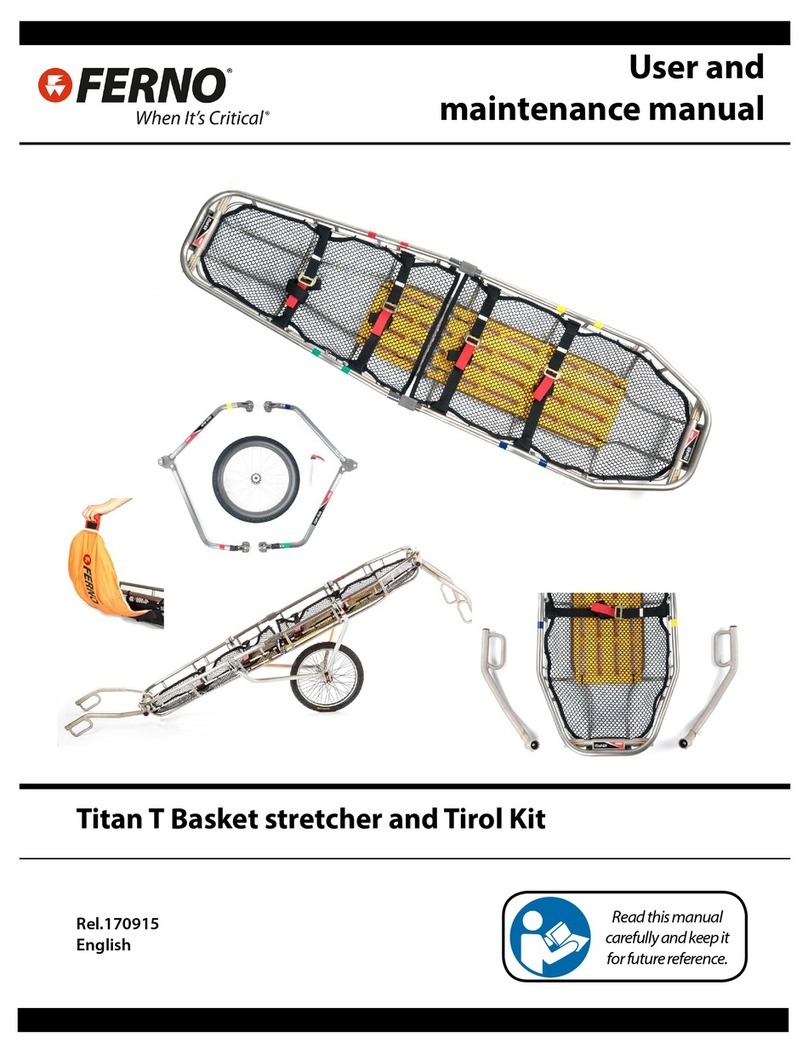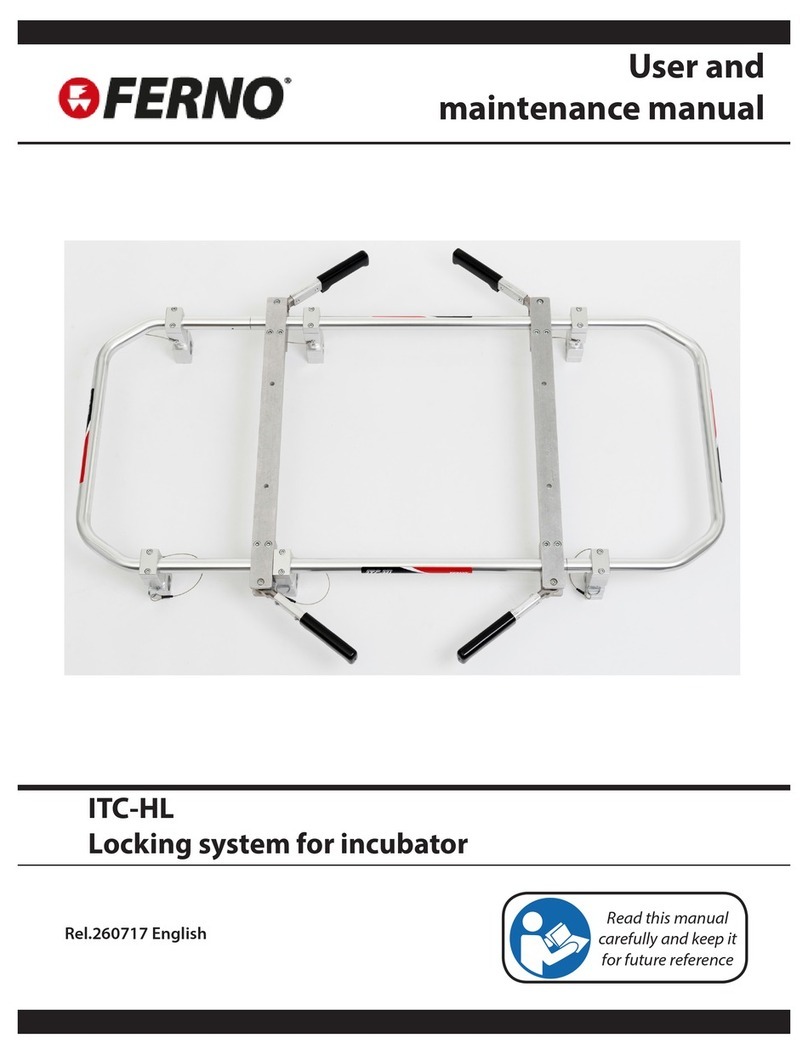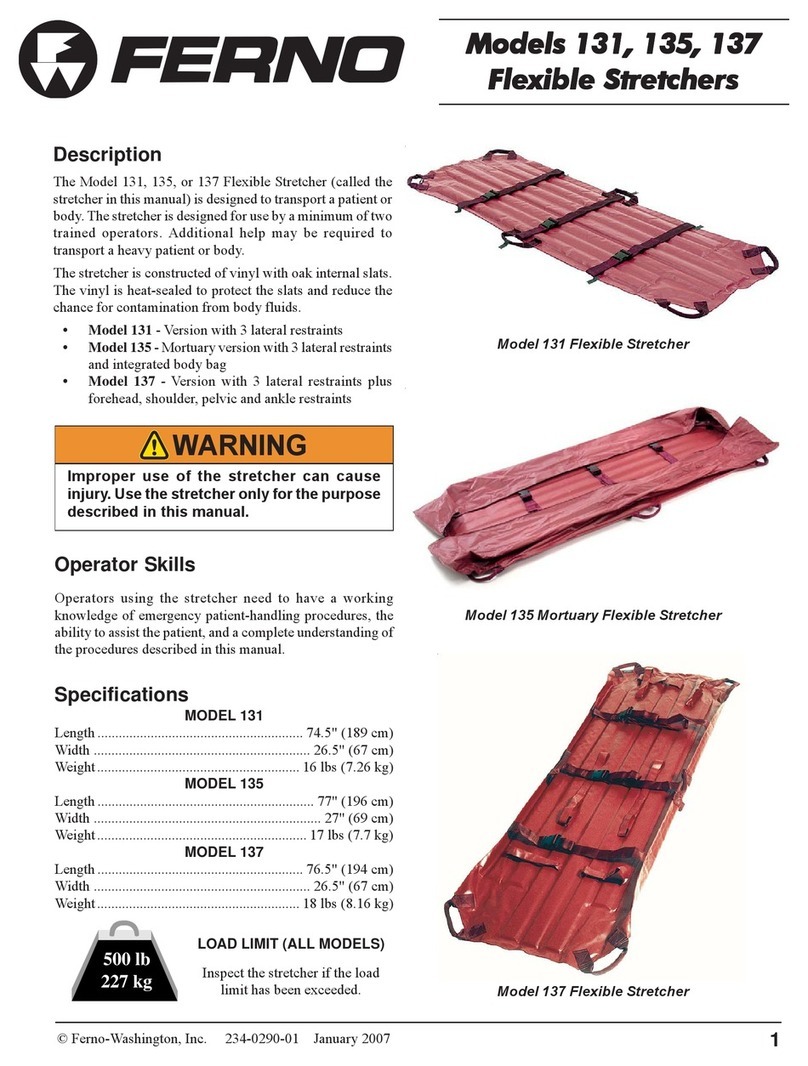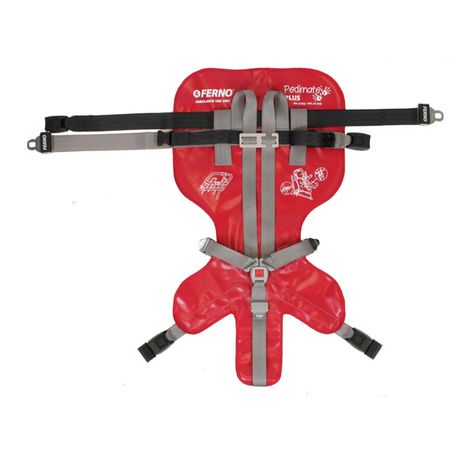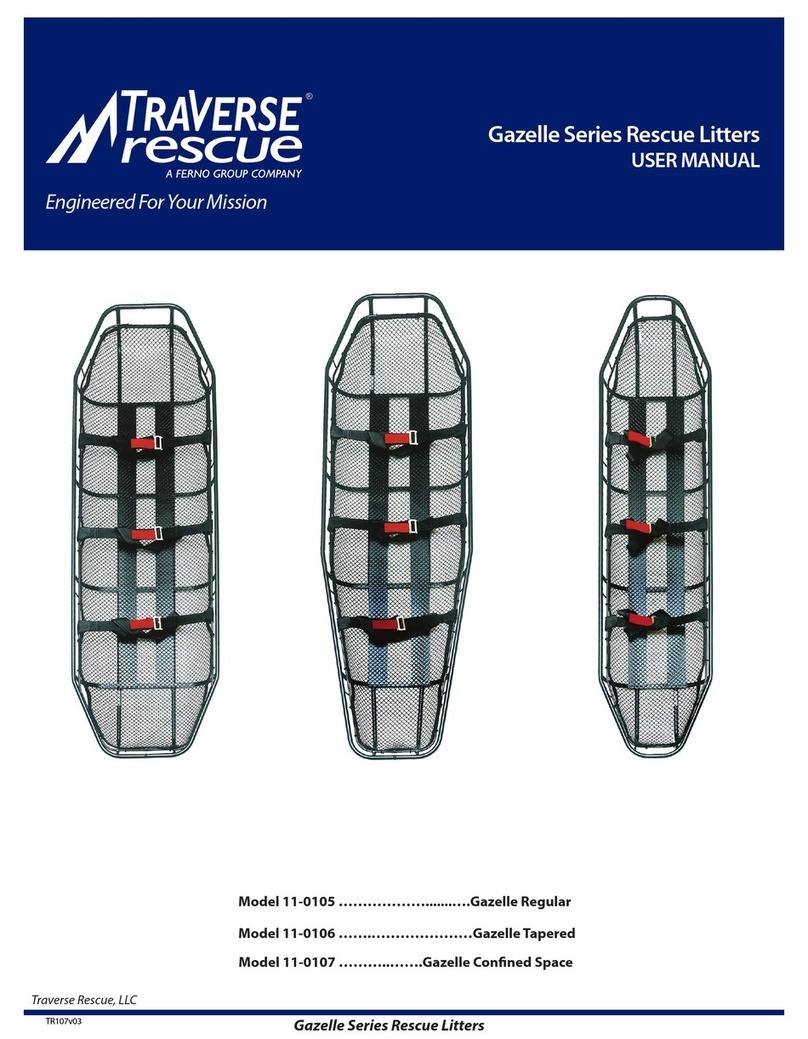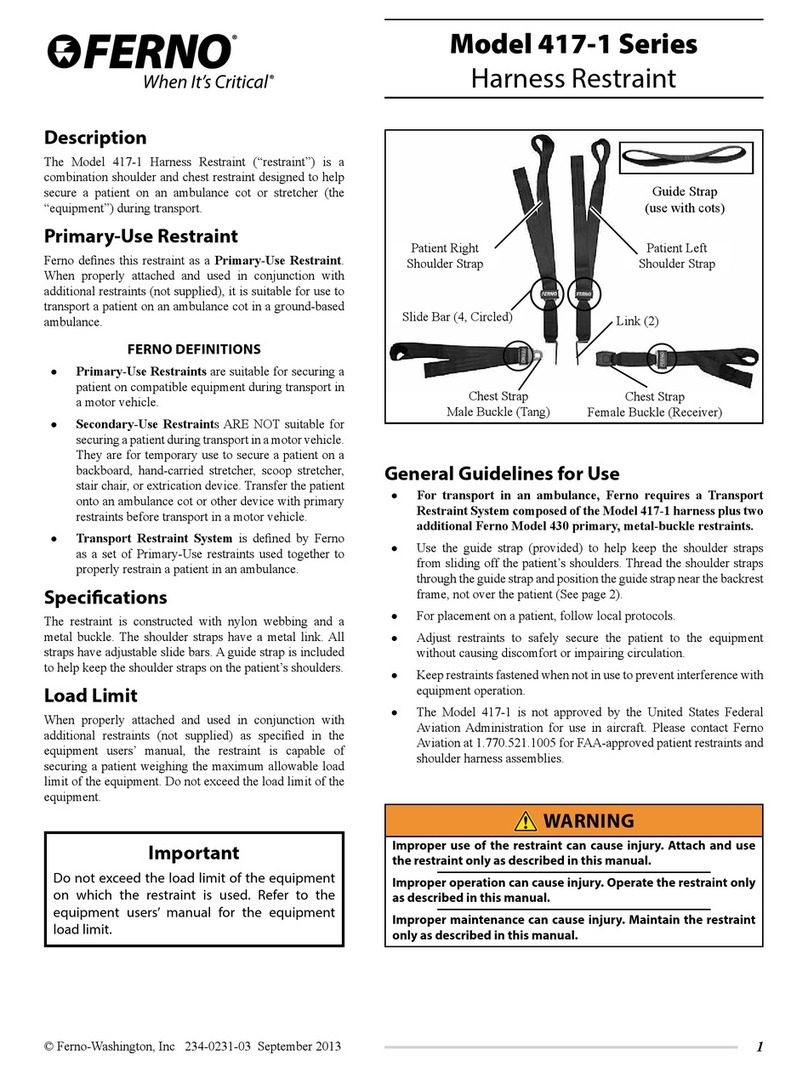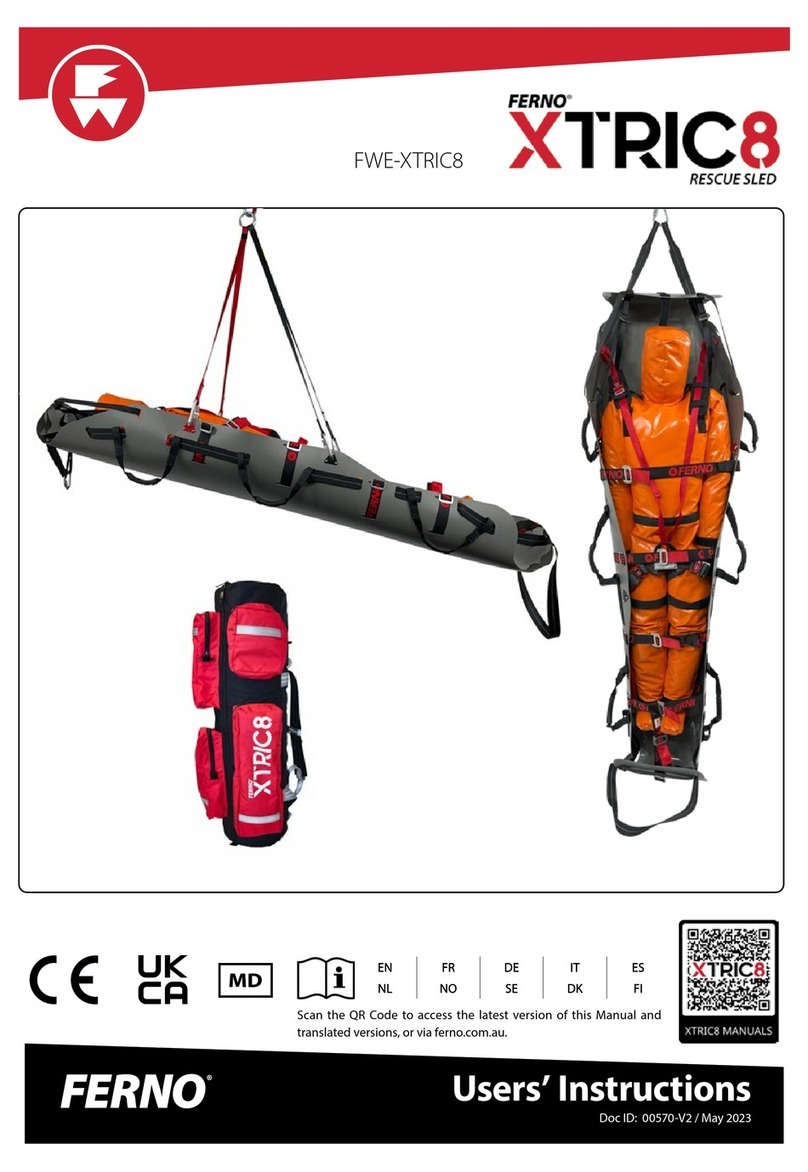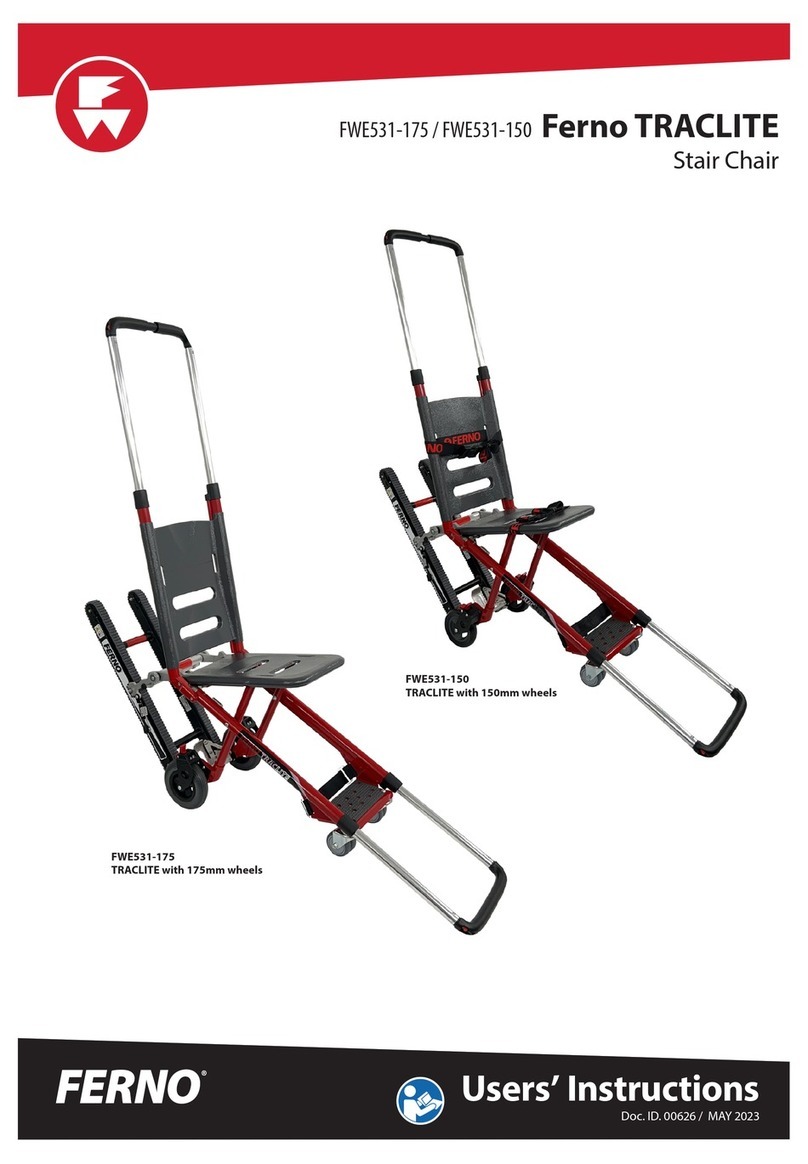Pg 3 ©Traverse Rescue, LLC | TR162v02
1.3 Bloodborne Disease Notice
OSHA (Occupational Safety and Health Administration) requires
employers to protect workers from workplace exposure to bloodborne
diseases such as HIV-1 and hepatitus. To reduce the risk of exposure
when using the rescue litter, follow disinfecting and cleaning
instructions in this manual. 1.4 Safety Labels
Labels place important information from the Users’ Manual on the
Hard and Soft Eye Litter Bridles.
Read and follow label instructions. Replace worn or damages labels
immediately. New labels are available from Traverse.
The Load-Limit label shown is affixed to the rescue litter.
2. Operator Skills and Training
2.1 Skills Operators using the litter
bridlea need:
•A working knowledge of emergency patient-handling procedures.
•The ability to assist the patient
•A complete understanding of the procedures described in this
manual
2.2 Training
Trainees need to:
•Follow a training program designed or approved by their training
officer
•Read this manual. For additional free users’ manuals, contact
Traverse Customer Care.
•Practice with the Hard and Soft Eye Litter Bridles before using it in
regular service
•Be tested on their understanding of the Hard and Soft Eye Litter
Bridles
•Record their training information. A sample Training Schedule and
Maintenance Record sheet is provided (Page 5)
•
Hard and Soft Eye Litter Bridles
3. About the Hard and Soft Eye Litter Bridles
3.1 Hard and Soft Eye Litter Bridle Description
The Traverse Rescue Soft-eye and Hard-eye Litter Bridle was designed
for rescue situations where raising and lowering of a rescue litter is
required during technical rescue operations.
These are fully adjustable litter bridles intended for use with any style
litter. All hardware meets NFPA and military specifications. The “O”
Ring used for the top tie-in point is rated 134 kN (30,000 lbs.).
Parachute buckles used on each of the four legs allow them to be
adjusted independently, which means the rescue litter can quickly and
easily be set at the best angle for patient comfort. The use of Mil-Spec
hardware throughout reduces wear on the web. Rated strength for
both bridles is 22kN (5,000 lbs.).
Litter Bridle features include:
•Independent Adjustability
•Available in two Models
3.2 General Specifications
Weight Hard Eye Litter Bridle................1.5 kg/3.4 lbs
Soft Eye Litter Bridle................. 1.3 kg/2.8
lbs Load Limit
................................................................................................ 22 kN
5000 Lbs
Specifications are rounded to the nearest whole number. Metric
conversions are calculated before rounding the Imperial
measurements. Traverse reserves the right to change specifications
without notice.
4. Using your Litter Bridle
•Connect the webbing loop or the steel “D” ring on one end of each
leg of the litter bridle to the rescue litter using a locking carabiner.
The two red webbings legs attach towards the head of the rescue
litter while the two blue legs stretch towards the foot of the
rescue litter. The carabiner should connect the litter bridle loops
or ‘D’ rings as the small square shaped opening made by the top
rails of the rescue litter and its vertical supports or at a designated
attachment point on the rescue litter. Face the carabiner gate
towards the inside of the rescue litter and make sure the nut gate
is locked.
•Adjust the length and check each of the buckles before putting a
load on the litter bridle. To adjust, pull up the black tab on the
adjusting buckle on top of the litter bridle. This will allow you to
pull on the webbing leg to shorten or lengthen the leg of the
bridle.
•Connect the mainline and the belay line to the Master Point of
Attachment (MPA, steel O ring) directly or with a locking
carabiner.
•A Tender Line may be connected directly to the MPA. The tender
should clip his harness directly to an ascender on the Tender Line.
5. Maintenance
If the litter line becomes soiled, it can washed in cold water with a mild
soap.
DO NOT USE BLEACH.
The litter bridle should be air dried out of direct sunlight.
Do not dry in home or commercial dryer.
6. Repair
Traverse Rescue recommends that all repair work be done by the
manufacturer. All other repair work or modifications of this product, or
its components may void the warranty and shall release Traverse
Rescue from all liability and responsibility as the manufacturer.

